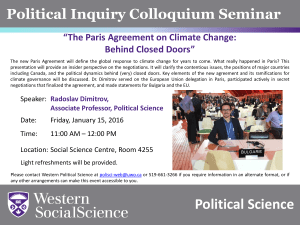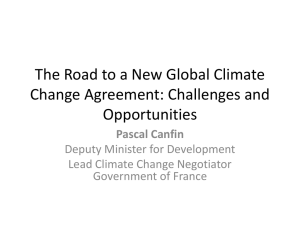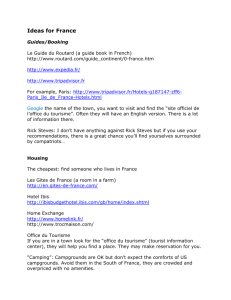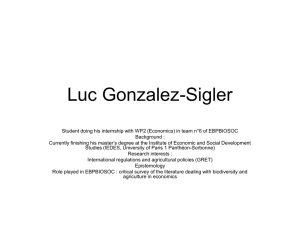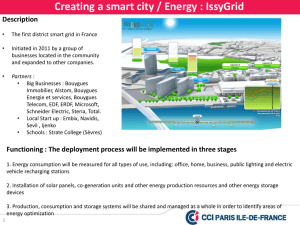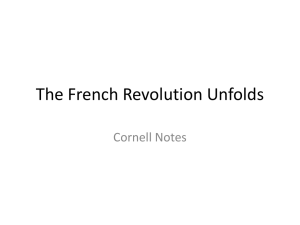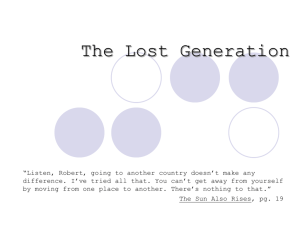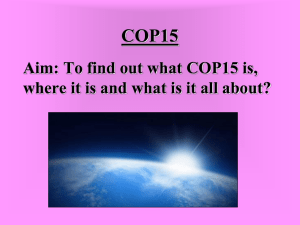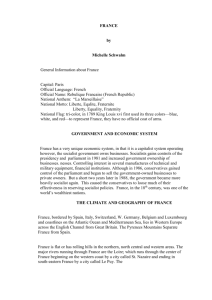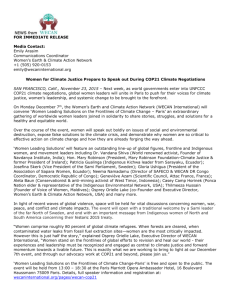PCM Messaging Background
advertisement
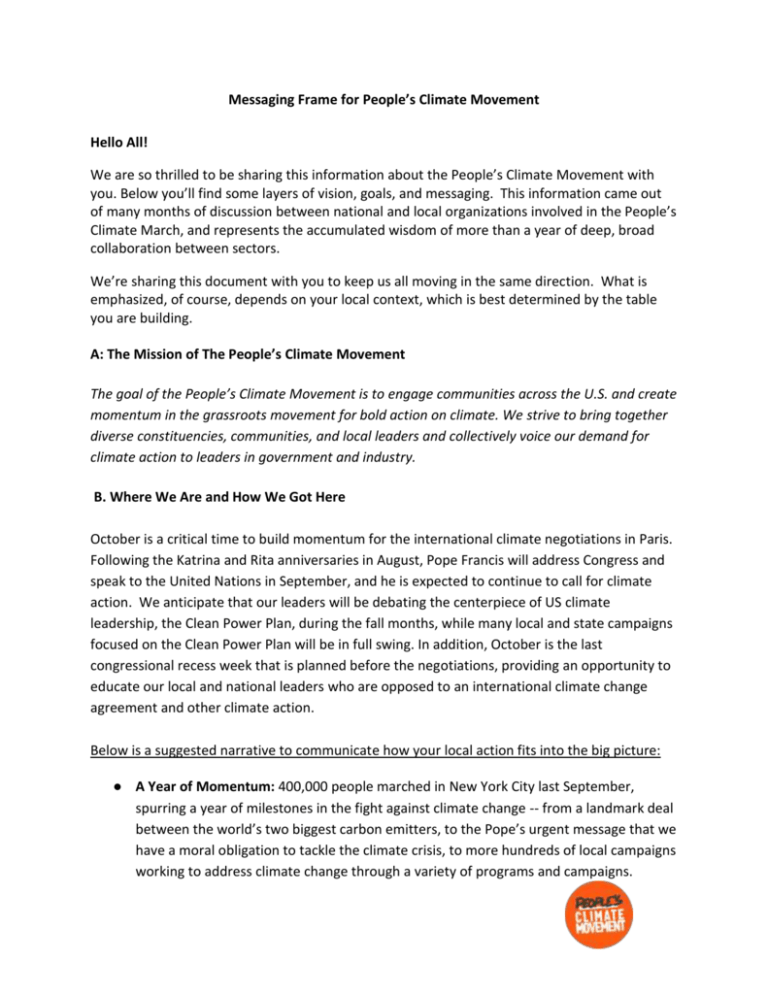
Messaging Frame for People’s Climate Movement Hello All! We are so thrilled to be sharing this information about the People’s Climate Movement with you. Below you’ll find some layers of vision, goals, and messaging. This information came out of many months of discussion between national and local organizations involved in the People’s Climate March, and represents the accumulated wisdom of more than a year of deep, broad collaboration between sectors. We’re sharing this document with you to keep us all moving in the same direction. What is emphasized, of course, depends on your local context, which is best determined by the table you are building. A: The Mission of The People’s Climate Movement The goal of the People’s Climate Movement is to engage communities across the U.S. and create momentum in the grassroots movement for bold action on climate. We strive to bring together diverse constituencies, communities, and local leaders and collectively voice our demand for climate action to leaders in government and industry. B. Where We Are and How We Got Here October is a critical time to build momentum for the international climate negotiations in Paris. Following the Katrina and Rita anniversaries in August, Pope Francis will address Congress and speak to the United Nations in September, and he is expected to continue to call for climate action. We anticipate that our leaders will be debating the centerpiece of US climate leadership, the Clean Power Plan, during the fall months, while many local and state campaigns focused on the Clean Power Plan will be in full swing. In addition, October is the last congressional recess week that is planned before the negotiations, providing an opportunity to educate our local and national leaders who are opposed to an international climate change agreement and other climate action. Below is a suggested narrative to communicate how your local action fits into the big picture: ● A Year of Momentum: 400,000 people marched in New York City last September, spurring a year of milestones in the fight against climate change -- from a landmark deal between the world’s two biggest carbon emitters, to the Pope’s urgent message that we have a moral obligation to tackle the climate crisis, to more hundreds of local campaigns working to address climate change through a variety of programs and campaigns. ● Turning a Historic Moment into a Global Movement: The People’s Climate March made history and launched a movement for decisive action on climate change. Over the last year, we have built support to transition away from dirty energy and invest in clean energy job training and green technologies that will fuel our economy and prevent further harm to the environment. ● Our Movement is Taking Hold in Cities and Towns across the Country: People are already feeling the harsh effects of climate change in their own communities and backyards, and they’re mobilizing in a band of activism in cities from coast to coast. ● What We Do in Our Own Cities and Towns Matters Globally: We are at a critical moment in the urgent fight against climate change. As global leaders prepare to meet in Paris to forge an international climate agreement, we must show the world that Americans are serious about climate action. ● Making the Most of the Fall: Over several events this fall, we will insist that our public leaders support us in taking action in building a new economy that will avert the worst impacts of the climate crisis. We started with a nationwide commemoration of Hurricanes Katrina and Rita, with special focus on the front-line communities who bore the brunt of the storms when they slammed into the Gulf Coast 10 years ago. These same communities have struggled to rebuild from the devastation in the intervening years and now face the threat of storm systems of equal or greater ferocity -- storms that are increasingly fueled by climate change. Join us as we stand with these communities most vulnerable to, and least able to cope with, the ravages of climate change and as we build to a National Day of Action on Oct. 14th. C. Messaging for Oct. 14TH - The National Day of Action: On October 14, join us for a national day of action as we celebrate the tremendous progress we’ve made on climate change at the international, national, and local level over the past year and signal the action we still urgently need to see on this crucial challenge. Below is a chart giving examples of how to build out messaging for your action, rooted in the narrative built collectively for last year’s People’s Climate March. Note that there are lots of details and phrases to pull from: use the ones that work for you. CORE MESSAGE EXPLANATION We’ve Accomplished Much, We Have Much More to Do! Marking the Work We’ve Done and the Work We Have to Do : we’ve had a tremendous year of progress on climate action globally, nationally, and locally but signal the action we still urgently need to see on this crucial challenge. We will Lead and We Demand Leadership! We Need to Lead by Example: The United States can lead the world in cutting carbon emissions and transitioning to a new clean energy economy. We have the resources, the technology, and the people to do this.. We need to keep climate action as an administration priority, help enforce what has been passed, and call for more action. We need our leaders to make the political choice to lead and put people before polluters. We insist that our public leaders support us in taking action in building a new clean energy economy that will avert the worst impacts of climate change by supporting the implementation of the President’s Clean Power Plan, securing a strong and ambitious global climate deal in Paris, and investing more heavily in clean energy. To Change Everything we need Everyone, Everywhere! The movement for climate action is growing and getting stronger every day. Workers, farmers, parents, youth leaders, business owners, interfaith leaders, indigenous communities, immigrants’ rights advocates, social justice groups, and environmental activists all understand that this fight is their fight. Whether we’re from the Gulf Coast or the Great Plains, San Diego or Cincinnati, a farm or a city -- no matter where we call home, we all have a stake in tackling the climate crisis. The Frontlines of Crisis are the Forefront of Change. The impacts of climate change are compounded by inequality. Low-income communities and nations are often hit hardest by the impacts of pollution and climate change, while wealthy communities and nations have disproportionately contributed to the problem. From frontlines to the halls of power: We will voice this signal on the frontlines of our communities and on the doorsteps of state and national representatives who are standing in the way of the climate action we need and that the American people overwhelmingly want. We will call out those public leaders, corporations, and other organizations that are standing in the way of progress as they deny the science and block the spread of popular energy alternatives like wind and solar – clean energy that will generate reliable power, good jobs, and safeguard the health of future generations. Transitioning to a clean energy economy is a pathway to new jobs, healthier We Demand a Fair and Just Transition to communities, and a sustainable economy. We're fighting for a fair and just clean energy economy that provides new jobs and training for workers hardest hit in the Clean Energy. transition from fossil fuels, so communities and families can benefit from clean energy technology. Workers and labor unions know the importance of investing in green jobs for the middle class and for the economy. We can revitalize the manufacturing and construction industries by investing in energy efficiency, clean energy technologies, and sustainable infrastructure. Economic progress goes hand in hand with reducing climate change. The transition to a clean energy economy will create jobs and spur the development of new and improved technologies. We don’t need to sacrifice economic growth, and we can protect the workers and communities who are most likely to be affected during the transition. Meanwhile, harmful climate impacts are already taking an economic toll, which will mount with inaction. Clean energy technology is advancing and getting cheaper every day. Dollar-forClimate Change is a Crisis -- but There are dollar, clean energy creates three times as many jobs as fossil fuels, and the wind and solar sectors are among the fastest growing in the economy. Solutions Ready Right Now. While clean energy is getting more affordable, we still need to invest in it. We need politicians and the private sector to increase investments in clean energy jobs and job training now The Change We Want is Within our Reach! The solutions to the climate crisis are well-known and within our reach. In fact, the transition away from fossil fuels and toward the clean and renewable energy sources – sources we know will improve the health of communities and the strength of our economy – is already underway and supported by a diverse and powerful coalition of communities. The Debate is Over and We Will Not Wait to Act. We need to take decisive action against climate change now. Manmade pollution has caused the Earth to warm, putting us and all future generations at risk. We are the first generation to see the effects of climate disruption and the last generation that can take action to solve the climate crisis. We only get one planet. We can’t leave an uninhabitable Earth for our children if we have the chance to prevent it. The Climate Action We Take Matters! D. Gauging Paris Our Impact Scales. The progress we make cutting carbon emissions at home, transitioning to cleaner sources of energy, and developing alternative renewable energy resources in our own communities have an impact at the state and federal levels. And the work we accomplish in the United States will signal to the rest of the world that we are ready to address this critical issue. In less than a hundred days, the next big international climate talks will take place in Paris. Below are a few suggestions on how to understand and contextualize the talks and the international climate agreement they will aim to deliver: ● How did we get to this moment? For decades, activists around the world have been leading the charge for climate action, calling for a just and sustainable clean energy economy that can power our future and protect both people and the planet. With that momentum building, we saw an unmistakably historic moment unfold during the People’s Climate March, and world leaders – both in government and industry alike – had no choice but to open their eyes to global climate injustice. As a result, we’ve seen great strides taken to protect our communities and empower our planet while transitioning toward a clean energy economy. From the US-China deal, to the UK and Norway divesting from coal, to Australia rejecting a proposed coal project in the Great Barrier Reef, we’ve seen success after success in the movement for a sustainable energy present and future. ● Why Paris? The annual climate negotiations have been happening for the past 20 years, but this year is the first year that each of the 195 countries in the United Nations Framework Convention on Climate Change (UNFCCC) have agreed to submit an outline of the climate action they intend to take starting in 2020. That’s a big deal. For the first time, countries are independently committing to act on climate in a measurable way while simultaneously helping to determine the scope of international action through local climate commitments – a testament to the hard work of local climate activists around the world. ● The Road Goes Through Paris The agreement that will come out of Paris in midDecember will not mark the end of our efforts, but rather, it will be an important step in the global process of ending the climate crisis. In the post-Paris era, we will need to hold countries accountable to their climate commitments and continue to set the bar high for global climate action.
